New York City History for Sale
As you may should know, Urban Archaeology is leaving Tribeca—it’ll move its manufacturing somewhere and its store somewhere else, and neither of those places will be here. And to lighten the load, so to speak, it’s auctioning a lot of its salvaged inventory on March 27 and 28 through Guernseys. The auction will be at Urban Archaeology at 143 Franklin, so go! Day 1’s offerings are here; day 2’s are here.
In the meantime, here are some highlights—all of which have a New York City provenance (and some of which are from very close to home). The text is from the auction listings.
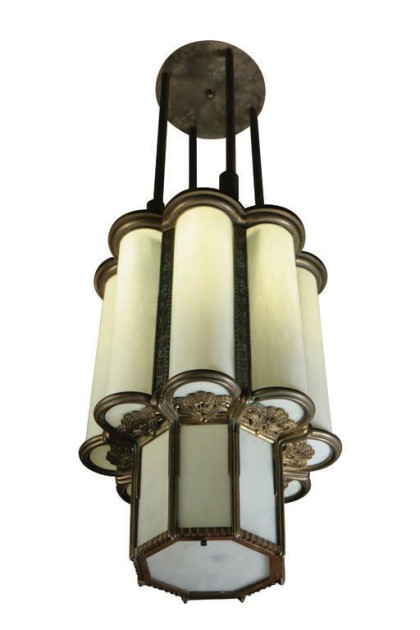
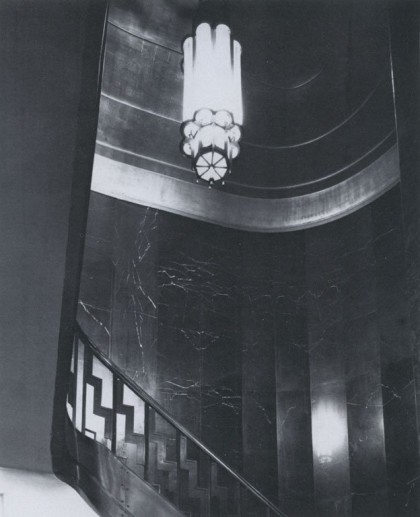 Lot 219: Chrylser Building Deco Pendant, c. 1930
Lot 219: Chrylser Building Deco Pendant, c. 1930
The Chrysler Building has been a monument to Art Deco since 1930. Built by architect William Van Alen, it was intended to be the world’s tallest building until it was surpassed in 1931 by the Empire State Building. Legendary for its design elements, which included similar hardware to those on the Chrysler vehicles, the Chrysler Building still remains a spectacular trademark of the City skyline. This pendant light is from the building’s staircase and is completely original. Its brass structure with small, decorative details, frames beautiful clouded glass. Restored.
•••••••••••••••
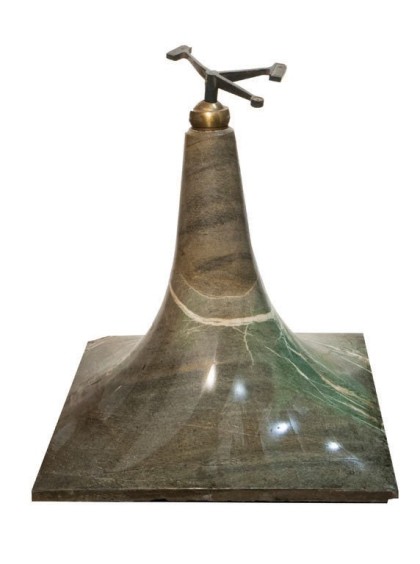 Lot 244: Green Marble Base, c. 1954
Lot 244: Green Marble Base, c. 1954
Gio Ponti and Olivetti came together in 1954 under the guidance of BBPR, an Italian architectural firm, to build the Olivetti Typewriter showroom on Fifth Avenue. The showroom, decorated with marble and a bas relief by Constantino Nivola, was one of the most imaginative interiors of the Postwar period. This base was made from a single piece of marble and features a small stand at the top to accommodate a typewriter. There were originally 18 of these set into the matching marble floor.
•••••••••••••••
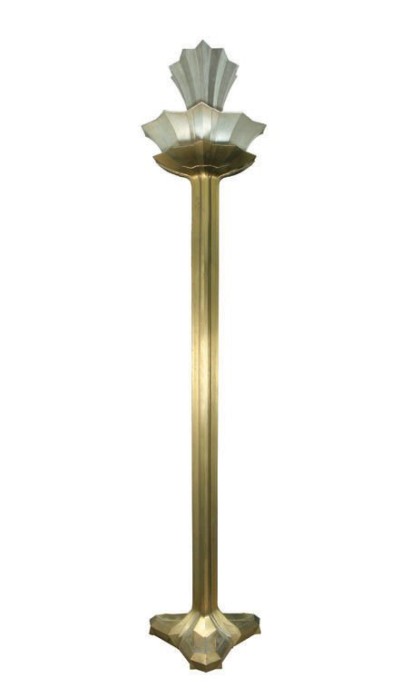 Lot 300: One Pair of Walter Kantack Torchères, c. 1931
Lot 300: One Pair of Walter Kantack Torchères, c. 1931
These towering lights were salvaged from the soaring mosaic lobby at One Wall Street. The torchères were made by Walter Kantack & Company. Each torchère features a refined and stylish base which tapers into the faceted post. The post supports a layered tulip-like top that uses alternating colored metals to create a wonderful contrast.
•••••••••••••••
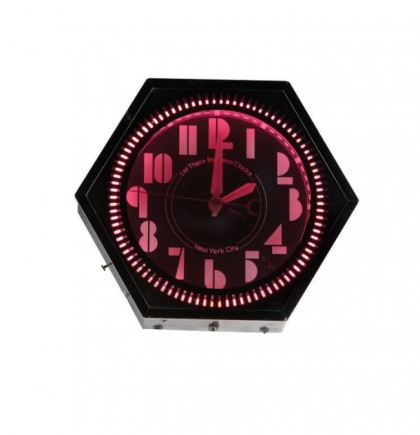 Lot 415: Let There Be Neon Clock, c. 1980
Lot 415: Let There Be Neon Clock, c. 1980
Let There Be Neon of Tribeca was founded in 1972 and remains the preeminent supplier of neon signs for New York City. The company caters to commerical and private clients; they were behind the iconic “Truck Stop Girl” for the HBO series “The Sopranos”. This hexagonal clock features pink neon lights and bears the manufacturer’s name.
•••••••••••••••
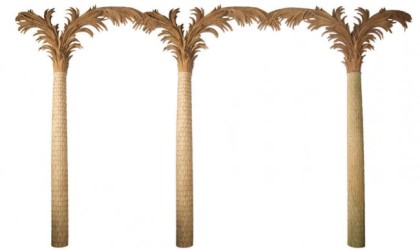 Lot 496: Palm Tree Columns, late 1920s
Lot 496: Palm Tree Columns, late 1920s
The 1920s brought the discovery of King Tutankhamun’s tomb and the fascination with Egyptian art and exoticism in the United States. These palm trees were salvaged from a Park Avenue triplex and are made of Cuban mahogany. Straight and corner pieces are available.
•••••••••••••••
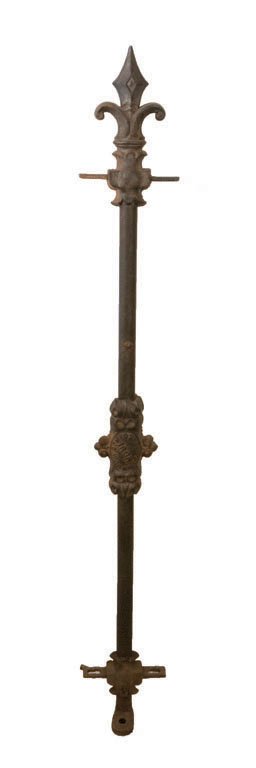 Lot 570: Manhattan Bridge Rail Post, c. 1909
Lot 570: Manhattan Bridge Rail Post, c. 1909
New York City began construction on the Manhattan Bridge, an early suspension bridge, in 1901 and opened it to traffic on the last day of the year 1909. Each rail post is marked, “Composite Iron Works Company.”
•••••••••••••••
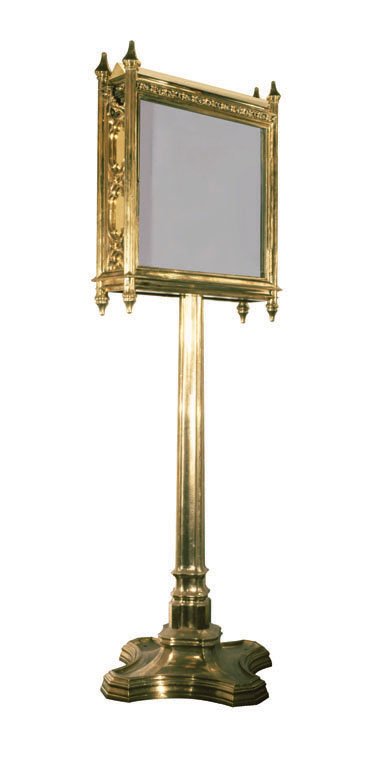 Lot 587: Woolworth Building Directory, c. 1913
Lot 587: Woolworth Building Directory, c. 1913
The brass building directory once graced each floor of the historic Woolworth Building in New York City, where the lobby remains one of the most lavish in Manhattan today. The directory wonderfully reflects the Neo-Gothic style of the edifice, which sets the profile of the Woolworth Building apart from the Lower Manhattan skyline.
•••••••••••••••
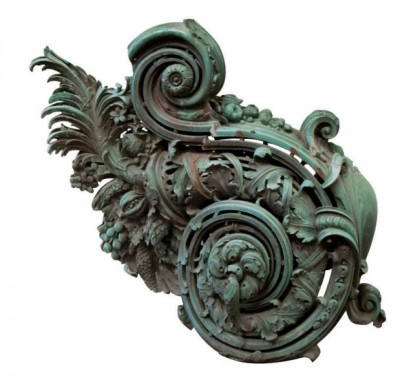 Lot 591: Astor House Bronze Outdoor Newell Post
Lot 591: Astor House Bronze Outdoor Newell Post
This bronze post once belonged to one of the most prominent families in New York. Done in the style of the Gilded Age, this green patina post is designed rather fittingly as a cornucopia, a symbol of prosperity and abundance.
•••••••••••••••
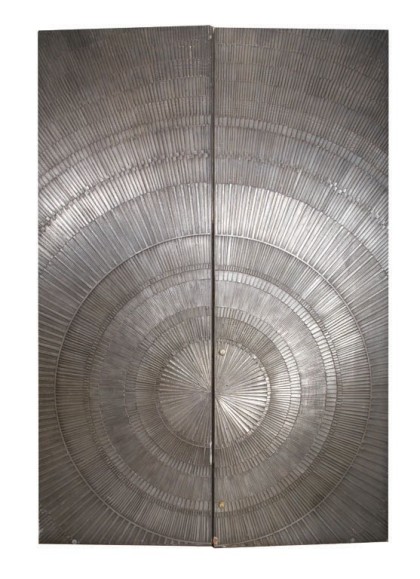 Lot 600: One Pair of Art Deco Doors
Lot 600: One Pair of Art Deco Doors
This pair of towering doors was salvaged from a New York City nightclub and attributed to Billy Joe McCarroll and David Gillespe. They are composition on wood and are decorated with an intricate radiating circular pattern. The metallic finish of the doors and the seemingly infinite motif creates an illusion that the doors are even bigger than their true dimensions.
•••••••••••••••
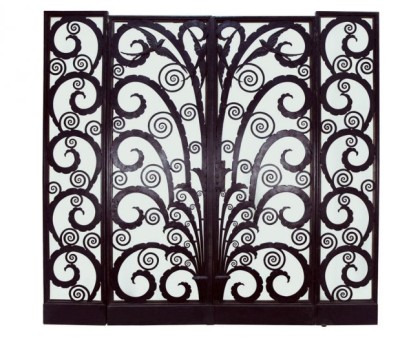 Lot 612: Louis Katona Art Deco Entrance Doors and Side Panels, c. 1925
Lot 612: Louis Katona Art Deco Entrance Doors and Side Panels, c. 1925
These exquisite French art deco doors and side panels were designed by Louis Katona for the landmark 1925 Paris Exhibition. After the Exposition, they became the entrance doors to a residential building in Manhattan. The hand wrought iron doors feature bursts of curling plumes with four elegant sparrows in flight. Impressed “L. Katona” and “France.” Included are four glazed storm liners. The doors and panels are all original and in excellent condition. French.
•••••••••••••••
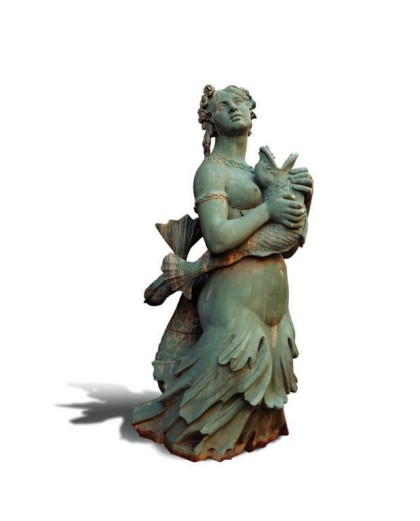
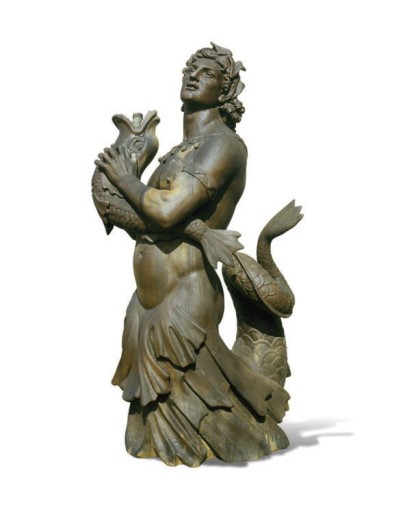 Lots 561-563: Mermaid and Merman, Place de la Concorde, Paris, Jacques Ignace Hittorf, 1833-1840
Lots 561-563: Mermaid and Merman, Place de la Concorde, Paris, Jacques Ignace Hittorf, 1833-1840
Architect and sculptor, Jacques Hittorff (1792-1867) created the Mermaid and Merman as a central character for the Place de la Concorde fountain in Paris. The fountain underwent renovations at the beginning of the 20th century and this original sculpturew, then already one hundred years old, were replaced with a replica that is still standing in the fountain to this day. This original Mermaid, along with the two Mermen, are considered the most important figures created by Hittorff ever presented for sale. Acquired by Urban Archaeology in 1985, the Mermen and Mermaid have graced the firm’s entrances in New York City and Bridgehampton ever since.
•••••••••••••••
I miss the mermaid already.













I never realized the history of those statues. That’s really cool.
Urban Archaeology is also in Bridgehampton. Will that store close also?
I wouldn’t imagine so. The Franklin Street lease is up, but the company is very much still alive; its main business isn’t in architectural salvage but high-quality reproductions, especially for lighting and fixtures—so it’s selling off a bunch of the salvage.